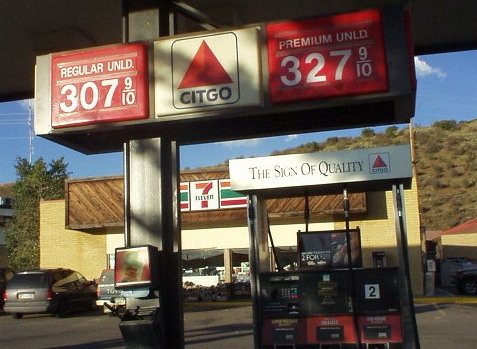Gasoline Prices
When doing a super long drive such as my Great American Western Road Trip, the cost of gasoline takes on special significance. We are seeing historic highs of >$3/gallon, and they are likely to go even higher. Here are my thoughts about them:
- I am really glad I am driving a fairly green machine (in this case, a ’91 Alfa Romeo Spider), which not only has been a hoot to drive but is consistently getting 35+ miles per gallon.
- On a leg of my road trip—from Montrose, CO to Taos, NM—I went 389 miles on 10.03 gallons of gas. That is 39 mpg!
- Contrary to a recent Consumer Reports article that states how they think EPA ratings for 90% of the vehicles out there are overstated, I am consistently getting way over the EPA highway rating of 30 mpg. In fact, with every vehicle I have owned except my ’69 MGB (which I need to rebuild and retune the dual carburetors, and maybe advance the ignition timing some more), I have consistently gotten more than the EPA estimates.
- How did I achieve a whopping 29% (or 39 – 30 = 9 mpg) better gas mileage than the EPA rating in the Montrose-Taos leg? By overinflating the tires (relative to Alfa’s recommendations) by 5 psi, not having a heavy foot, and following other advanced tips.
- For the last few legs, I have experimented using 87-octane fuel instead of the 89-octane fuel I was using in CA. (Alfa recommended using 91-octane). The result: as long as I don’t have a heavy foot, no pinging or knocking occurs (which is what higher-octane fuel is supposed to prevent: the destructive pre-combustion/pre-detonation of fuel caused by hot carbon deposits in high-compression motors). The car has run great with no decrease in gas mileage.
- In Idaho, Wyoming, and Colorado (plus others I’m sure), “regular” fuel is just 85 or 86 octane—in contrast to California, Oregon, and Washington, where “regular” fuel is 87 octane. In ID, WY, and CO, “mid-grade” is usually 87 octane. “Premium” seems to be 91 octane in all states.
- Name brand gasoline does seem to matter [amended 10/05: one day I got some pinging using Chevron gas, which is reputedly the best in the business. Maybe it was due to condensation in the gas tank?] I have had no problems with Chevron, Shell, Conoco, Texaco, or even Arco gas, but some gasoline from “mom and pop” operations has sometimes resulted in noticeable pinging when going uphill. Using brand-name gasoline on the next runs have remedied that problem. [amended 10/05: again, I am unsure if this is due to it being brand-name gas, or just fresh gas with no condensation, or something else.] Makes me wonder if in some of those small gasoline operations, if their gas dispensers (regular, mid-grade, and premium) are all filled with their low-octane stuff. Would be easy fraud to commit—like how would any consumer know for sure?
- I figure, I will have spent about $800 for gasoline on this trip by the time it is done. If I was driving an SUV, truck, or minivan that was only getting 17-18 mpg (like most of them do), I’d have spent $1600.
- Gasoline seemed to be more expensive in Canada. In Squamish, British Columbia, 89-octane was going for $CAN1.10/liter, which is $US3.62/gallon by my calculations (at $CAN1.15 = $US1.00, the exchange rate at the time). It was only going for $2.85 or so in Washington state at the time.
- Even though the gas prices are emptying out my wallet a little quicker and sympathize with people who are struggling to make ends meet due to them, I welcome these higher prices as I hope it will encourage people to get out of their big honking SUVs and drive fuel-efficient vehicles. Maybe then our dependence on foreign oil would be lessened and the car landscape around here would become more like that in France!
